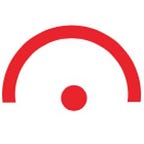How you can use Mapflow-QGIS to leverage the search for the open data by MAXAR
MAXAR keeps on publicly releasing imagery of the affected areas to support response efforts — see their last publications following the Turkey and Syria earthquake disaster.
However, this is a bit challenging to find the appropriate image following the way they publish their open data. How to find the appropriate image by a certain location? You’re apparently getting stuck with this question while browsing the list of URLs.
Basically, the list of the data URLs contains all the links to the satellite imagery chunks.
Following Maxar’s catalog structure you are supposed to filter these images by the “quadkey” (the Bing Maps spatial indexing concept). Having said that this data structure has its advantages for developers, it’s not the common way for GIS and Mapping users who want to leverage geospatial imagery to create early response and emergency maps.
How can you get started with open data using QGIS?
QGIS is free and popular among mapping specialists. Therefore if you are getting stuck with the list of URLs for image chunks, I can recommend using our open-source QGIS plugin — Mapflow, which powers the analysis of geospatial imagery with Mapflow AI.
The good news is that the plugin has an implementation of the search for Maxar’s imagery which is available for everyone. Let’s see how to use it (TBD — to make it more helpful) in case of emergency situations.
Turkey earthquake — Open data
To define the affected area — you can easily download data from USGS (which provides a well-known service for worldwide monitoring of earthquakes).
- Log in using your Mapflow API token
- Switch to the Provider’s tab and select Maxar SecureWatch in the Provider’s list
- Let’s search by canvas extent — it’s not gonna be so many images for the last dates
Here we go for the search results. You can also preview images on the map.
Now you can check if the appropriate image is available under the Open data program and download it by image ID (quadkeys can also be used to filter by image chunks). The best way is to use the file list containing links to AWS — copy it to some spreadsheet and find by ID.
Note! If you have your own credentials for Maxar SecureWatch — you can enter them and preview images in full resolution.
If you have comments or suggestions we encourage you to contribute — it will help to make this initial user guide better and more clear for those who respond with the mapping to the disasters and crises.
❗️UPD:
We published all Maxar imagery and keep it updated on our tile server for easier integration with GIS and Mapflow.
The difference is that we distribute these images by scenes (not by chunks) using our XYZ tile server (its beta-version), which can be connected to any GIS, #RapID #Openstreetmap, #Mapflow-#QGIS, whatsoever. The scenes are collected by Image IDs — this is the common and interoperable way to distribute satellite images.
👉 Find the list of all URLs to our server (and to the files on AWS, published by Maxar).
References:
Maxar’s response to the devastating earthquake in Turkey.
Openaerialmap — the resource for consolidation of all openly licensed imagery
